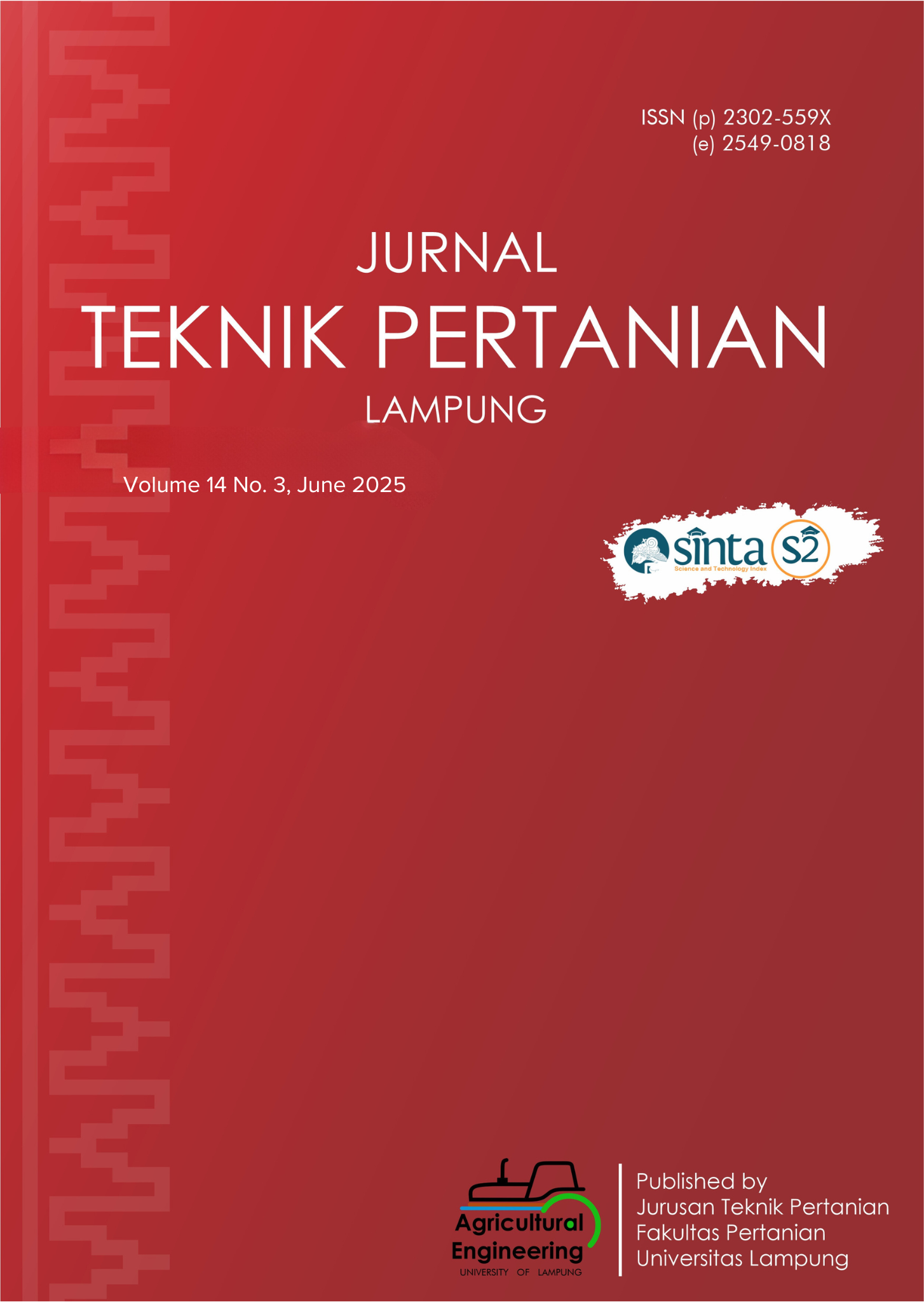Application of ANP Method and Fuzzy Inference System on New Product Selection and Production Capacity Determination of Fish Canning
DOI:
https://doi.org/10.23960/jtep-l.v14i3.823-835 Abstract View: 166
Abstract View: 166
Abstract
Jember State Polytechnic has a fish canning teaching factory with a productivity of 7 q of fish per production. The canned fish product is a superior product, but the quality and type of products produced are low quality and less desirable. Therefore, product diversification is needed to increase the added value of canned fish. The fluctuating production capacity at teaching factory (TeFa) Fish Canning is an obstacle in determining production capacity according to market demand. The aim of this research is to diversify products and optimize fish canning products. This research was carried out using two methods, namely selecting superior products for TeFa fish canning using the Analytical Network Process (ANP) method and determining production capacity using the Fuzzy Inference System (FIS)-Tsukamoto method. The research results show that TeFa fish canning's superior product was determined by considering 4 criteria and 12 sub-criteria to produce tongkol balado with the highest weight value and followed by sardines with chili sauce, yellow seasoning tuna, and tuna salt solution. Simulation results for optimizing canned fish production are 5.7863 q/day which provides the optimum supply of canned fish.
Keywords: Analytic Network Process (ANP), Fish canning, Fuzzy Inference System (FIS) Tsukamoto, New product selection, Production capacity.
Downloads
References
Azadegan, A., Porobic, L., Ghazinoory, S., Samouei, P., & Kheirkhah, A.S. (2011). Fuzzy logic in manufacturing: A review of literature and a specialized application. International Journal of Production Economics, 132(2), 258–270. https://doi.org/10.1016/j.ijpe.2011.04.018
David, F.R. (2013). Strategic Management Concept & Cases (8th ed.). Prentice Hall International, Inc.
Djinovic, Z., Tomic, M., Pavelka, R., Sprinzl, G., & Traxler, H. (2020). Measurement of the human cadaver ossicle vibration amplitude by fiber-optic interferometry. The 43rd International Convention on Information, Communication and Electronic Technology (MIPRO), 1894–1898.
Fons, S., Achari, G., & Ross, T. (2004). A fuzzy cognitive mapping analysis of the impacts of an eco-industrial park. Journal of Intelligent & Fuzzy Systems, 15(2), 75–88. Heizer, J., & Render, B. (2007). Operations Management (2 vols.). Pearson Prentice Hall.
Hermanuadi, D., Brilliantina, A., & Novitasari, E.K. (2018). Determination of agro-industry area based on cassava commodity in Bondowoso Regency. IOP Conference Series: Earth and Environmental Science, 207(1). https://doi.org/10.1088/1755 1315/207/1/012010
Kasutjianingati, Wahyono, A., Brilliantina, A., & Novitasari, E.K. (2020). SWOT and Analytical Network Process (ANP) analysis for Robusta coffee bean development strategy in Panti District, Jember Regency. IOP Conference Series: Earth and Environmental Science, 411, 012019. https://doi.org/10.1088/1755-1315/411/1/012019
Klir, G., & Yuan, B. (1995). Fuzzy Sets and Fuzzy Logic (Vol. 4). Prentice Hall. Kotler, P., Armstrong, G., Kristiaji, W.C., & Sihombing, D. (2001). Prinsip-prinsip Pemasaran (Vol. 1, Translated by Bob Sabran). Erlangga, Jakarta.
Novitasari, E. K., Hermanuadi, D., & Brilliantina, A. (2020). Application of SWOT and ANP methods in order to select the agroindustrial development strategy based on tapai in Bondowoso. Food ScienTech Journal, 2(2), 62-68. https://doi.org/10.33512/fsj.v2i2.9387
Oktaviani, L. (2014). Sistem penentuan perhitungan jumlah produksi folding gate menggunakan fuzzy logic pada PT. Jihan Jaya. Jurnal Sistem Informasi, 1(1), 12-15.
Olfat, L., Amiri, M., Soufi, J.B., & Pishdar, M. (2016). A dynamic network efficiency measurement of airports performance considering sustainable development concept: A fuzzy dynamic network-DEA approach. Journal of Air Transport Management, 57, 272–290. https://doi.org/10.1016/j.jairtraman.2016.08.007
Ross, T.J., Booker, J.M., & Montoya, A.C. (2013). New developments in uncertainty assessment and uncertainty management. Expert Systems with Applications, 40(3), 964–974. https://doi.org/10.1016/j.eswa.2012.05.054
Saaty, T.L., & Ozdemir, M.S. (2020). The Encyclicon: A Dictionary of Decisions with Dependence and Feedback based on the Analytic Network Process. RWS Publications.
Saaty, T.L., & Vargas, L.G. (1987). Uncertainty and rank order in the analytic hierarchy process. European Journal of Operational Research, 32(1), 107–117. https://doi.org/10.1016/0377-2217(87)90275-X
Saaty, T.L., & Vargas, L.G. (2006). Decision Making with the Analytic Network Process (Vol. 282). Springer. Slack, N., & Brandon-Jones, A. (2018). Essentials of Operations Management. Pearson UK.
Suarez, F., & Utterback, J. (1993). Patterns of industrial evolution, dominant designs, and firms' survival. Research on Technological Innovation, Management and Policy, 5, 47–87.
Wijaya, R., Hariono, B., Kautsar, S., Brilliantina, A., Kurnia, E.N.S., Rachmanita, R.E., Fatoni, M.K., & Yunus, M. (2023). Penerapan teknologi High Pulsed Electric Field (HPEF) pada proses thawing sebagai upaya meningkatkan mutu produk ikan kaleng di Tefa Fish Canning Polije. NaCosVi: Polije Proceedings Series, 5(1), 154–158.
Wijaya, Y., & Putri, R. (2021). Economic value influence on consumer income and product preference in the food industry. Journal of Consumer Behavior, 12(4), 45–56.
Wulandari, D.A.N., Prihatin, T., Prasetyo, A., & Merlina, N. (2018). A comparison Tsukamoto and Mamdani methods in fuzzy inference system for determining nutritional toddlers. The 6th International Conference on Cyber and IT Service Management (CITSM), 1–7. https://doi.org/10.1109/CITSM.2018.8674248
Zadeh, L.A. (2023). Fuzzy logic. In In Granular, Fuzzy, and Soft Computing. NY: Springer US. Zadeh, L.A., Klir, G.J., & Yuan, B. (1996). Fuzzy Sets, Fuzzy Logic, and Fuzzy Systems: Selected Papers (Vol. 6). World Scientific.
Downloads
Published
How to Cite
Issue
Section
License
Authors who publish with this journal agree to the following terms:
Authors retain copyright and grant the journal right of first publication with the work simultaneously licensed under a Creative Commons Attribution-ShareAlike 4.0 International Lice that allows others to share the work with an acknowledgement of the work's authorship and initial publication in this journal.
Authors are able to enter into separate, additional contractual arrangements for the non-exclusive distribution of the journal's published version of the work (e.g., post it to an institutional repository or publish it in a book), with an acknowledgement of its initial publication in this journal.
Authors are permitted and encouraged to post their work online (e.g., in institutional repositories or on their website) prior to and during the submission process, as it can lead to productive exchanges, as well as earlier and greater citation of published work (See The Effect of Open Access).
Jurnal Teknik Pertanian Lampung

JTEPL is licensed under a Creative Commons Attribution-ShareAlike 4.0 International License.













